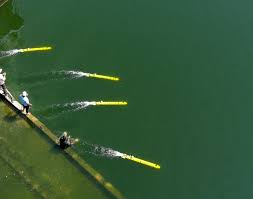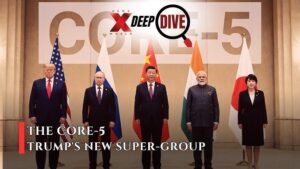1.Introduction
India has strengthened its undersea surveillance and mine-countermeasure capabilities through the development of Man-Portable Autonomous Underwater Vehicles (MP-AUVs).
Developed by DRDO’s Naval Science and Technological Laboratory (NSTL), Visakhapatnam, these AUVs support underwater security, mine detection, and coastal defence operations.
2. What are MP-AUVs?
Man-portable, compact, and lightweight underwater robots capable of operating without human control once deployed.
Designed for rapid underwater reconnaissance, especially in shallow, complex coastal regions.
3. Key Features (UPSC-Relevant)
3.1 Autonomy & Operation
Can navigate underwater autonomously using pre-programmed routes.
Suitable for deployment from small naval crafts or patrol vessels.
Ideal for quick deployment in emergency mine-threat situations.
3.2 Sensors & Payloads
Equipped with side-scan sonar:
Produces detailed seabed images
Detects objects, anomalies, and mine-like threats
Integrated underwater cameras:
Enables visual confirmation of suspicious objects
Useful for mapping and reconnaissance missions
3.3 Advanced Artificial Intelligence
Uses deep-learning-based algorithms for:
Automatic target recognition (ATR)
Classification of underwater objects (mines, debris, man-made structures, etc.)
Reduces operator workload and enhances speed and accuracy in decision-making.
3.4 Portability
Compact and lightweight, easy to carry by small naval teams.
Specially designed for man-portable mine-detection missions during naval operations.
4. Role of DRDO’s NSTL (Naval Science & Technological Laboratory)
NSTL is India’s premier laboratory for naval systems and underwater defence technologies.
Located in Visakhapatnam, it has developed:
Torpedoes
Autonomous underwater platforms
Mine countermeasure systems
MP-AUV development is part of its effort to enhance indigenous underwater military capability.
5. Mission Objectives (Clear & UPSC-Oriented)
Primary Objective
Real-time detection and classification of underwater mines and mine-like objects.
Other Mission Goals
Coastal security
Reconnaissance and seabed mapping
Harbour and naval base protection
Intelligence gathering in sensitive maritime regions
Support to special naval operations
6. Strategic Importance for India’s Maritime Security
6.1 Enhancing Mine-Countermeasure Capability
Mines are among the cheapest yet deadliest maritime weapons.
MP-AUVs allow safe, fast, and unmanned detection — reducing risk to naval divers and ships.
6.2 Strengthening Coastal Defence
India’s coastline: 7,500+ km
High movement of:
Merchant vessels
Naval assets
Strategic maritime trade
AUVs help maintain security in these dense maritime zones.
6.3 Protection of Critical Infrastructure
Useful around:
Ports
Offshore installations
Naval bases
Shipyards
Strategic islands (e.g., Andaman & Nicobar)
6.4 Force Multiplication
Autonomous operations allow the Navy to redeploy manpower to other critical tasks.
Low logistics footprint due to portability.
6.5 Indigenous Defence Capability
Strengthens Atmanirbhar Bharat in defence.
Reduces dependence on foreign underwater surveillance systems.
7. Exam-Oriented Quick Facts (For Prelims/Mains)
Developed by DRDO’s NSTL, Visakhapatnam.
Equipped with:
Side-scan sonar
Underwater optical camera
Uses deep-learning algorithms for autonomous classification.
Mission: Mine-like object detection in real time.
Compact, lightweight, suitable for man-portable naval deployment.
Enhances coastal monitoring, harbour defence, and underwater reconnaissance.
8. Possible UPSC Mains Questions
“Discuss the significance of indigenous Autonomous Underwater Vehicles (AUVs) in strengthening India’s maritime security architecture.”
“How can AI-enabled systems such as MP-AUVs transform underwater mine countermeasure capability for the Indian Navy?”
9. Conclusion
The MP-AUV project reflects India’s rapid advancements in naval robotics, underwater surveillance, and strategic defence technologies.
By integrating AI and deep learning with autonomous operations, India is not only strengthening its coastal security but also moving towards self-reliance in underwater military systems.






